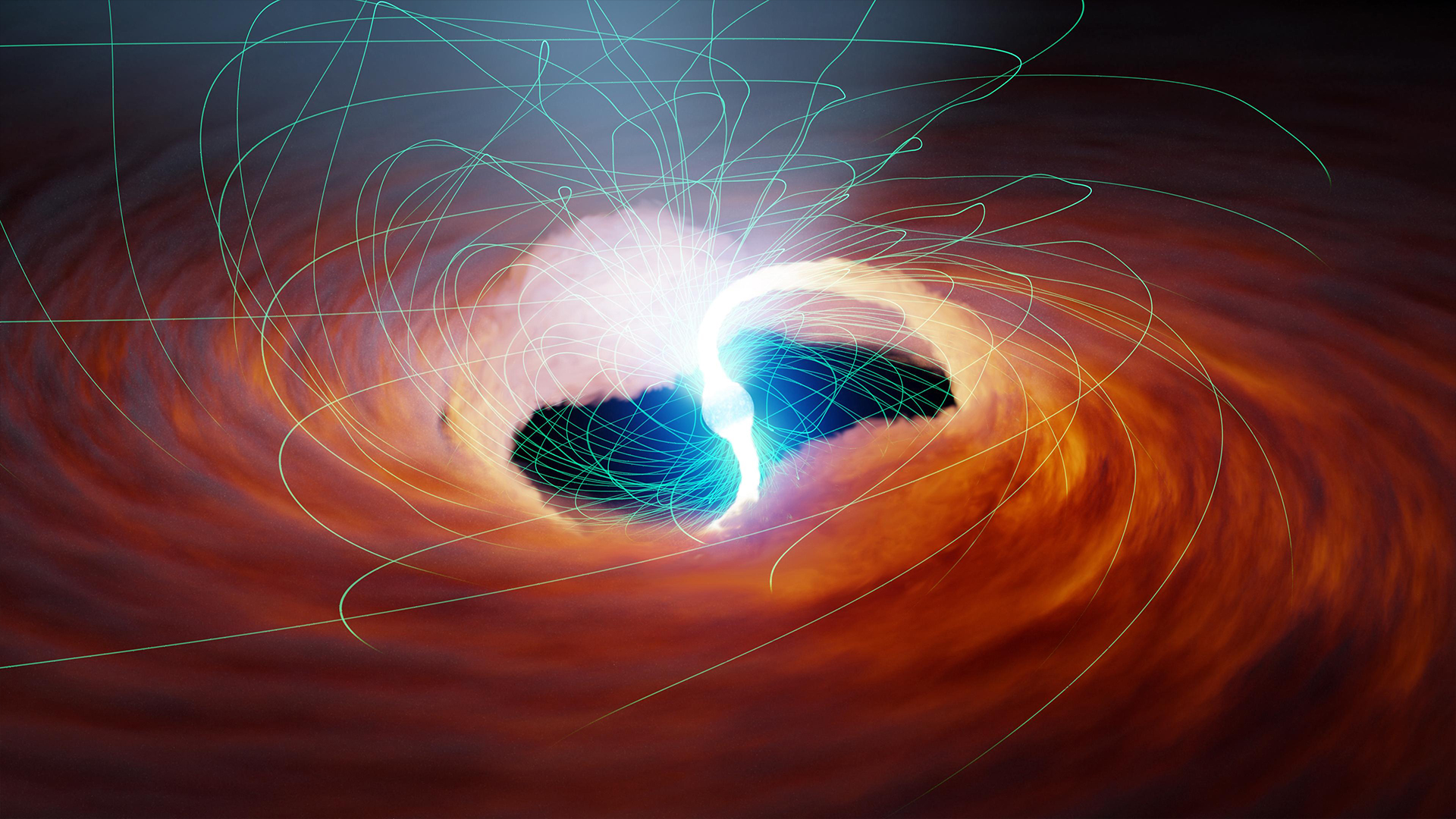Dark matter could be building up inside dead stars — with potentially explosive consequences
Invisible dark matter may be gathering in the ultra-dense innards of neutron stars, potentially causing them to detonate in massive explosions.

Dark matter is thought to inhabit the entire universe but is completely invisible to observations. Now, scientists may be able to detect the mysterious matter's subtle influence as it burrows itself into the hearts of dead stars, altering how they behave.
Astronomers have amassed an enormous body of evidence in support of dark matter, despite being unable to spot it directly. The key lies in observing its effects on the visible things around it. For example, researchers can see that stars orbit faster inside galaxies than they should based on the visible matter alone. Galaxies move around within clusters far faster than they should. Light from the early universe has a unique fingerprint that is impossible to produce from normal matter filling the cosmos. All these lines of evidence suggest that the vast majority of matter in the universe is of an unknown, invisible form that does not interact with light.
But beyond that, dark matter is a mystery. It might be a new kind of particle, like a ghostly version of an electron. It might be a collection of waves that slosh throughout the cosmos. It might even be a countless number of tiny black holes forged in the fires of the Big Bang.
Related: Strange star system may hold first evidence of an ultra-rare 'dark matter star'
But whatever it really is, dark matter has gravity, and so it naturally collects in regions of strong gravity. The regions of strongest gravity in the universe are black holes, but because they don't let anything back out again, they're not useful when studying dark matter.
The next strongest gravitational environments are the remnants of dead stars, particularly neutron stars. Neutron stars are a hundred trillion times denser than Earth and have strong enough gravity that they can cause light to orbit around them in a circle. They are also excellent laboratories for studying dark matter, as they likely have the highest concentrations of the mysterious substance anywhere in the universe, according to a study scheduled to appear in the journal Physics Reports. (The study has yet to be peer-reviewed).
In the new study, the researchers explored how dark matter can have a variety of effects deep within neutron stars, depending on what the dark matter is made of and how it might interact with normal matter. For example, dark matter particles might occasionally interact with each other, causing them to annihilate and release a tiny amount of energy. This would happen only very rarely, but with the high concentrations of dark matter inside neutron stars, it might release enough heat to alter the interior dynamics of those dead stars.
Sign up for the Live Science daily newsletter now
Get the world’s most fascinating discoveries delivered straight to your inbox.
Just the accumulation of dark matter can heat up neutron stars if it strikes particles of normal matter on its way in. In the most extreme possibilities, a particle of dark energy could deposit just the right amount of energy to trigger a "superburst" inside a neutron star, launching a runaway nuclear chain reaction that detonates the entire star, destroying it.
Even without interactions, dark matter could cause havoc. If it builds up and accumulates in the core, it would increase the overall mass of the neutron star. If the mass gets too high, the star’s core could implode into a black hole, swallowing the rest of the star in the process.
The researchers pointed out several avenues to discover how dark matter might affect neutron stars. For one, there is witnessing the rare but possible total explosion and death of a neutron star. Outside of that, the accumulation and annihilation of dark matter particles will alter the natural cooling that neutron stars face over their long lifetimes, and so if we measure the temperature of neutron stars precisely enough, we might be able to detect the influence of dark matter.
Lastly, because dark matter particles alter the internal dynamics and distribution of mass within a neutron star, enough dark matter can change how quickly a neutron star rotates, and what happens when they "glitch" (a phenomenon in which neutron stars suddenly change their rotation speed). Detailed observations of rotating neutron stars, like the pulsar timing arrays used for gravitational wave studies, could be turned around to give us precious insights into what's happening within their potentially dark hearts.

Paul M. Sutter is a research professor in astrophysics at SUNY Stony Brook University and the Flatiron Institute in New York City. He regularly appears on TV and podcasts, including "Ask a Spaceman." He is the author of two books, "Your Place in the Universe" and "How to Die in Space," and is a regular contributor to Space.com, Live Science, and more. Paul received his PhD in Physics from the University of Illinois at Urbana-Champaign in 2011, and spent three years at the Paris Institute of Astrophysics, followed by a research fellowship in Trieste, Italy.










